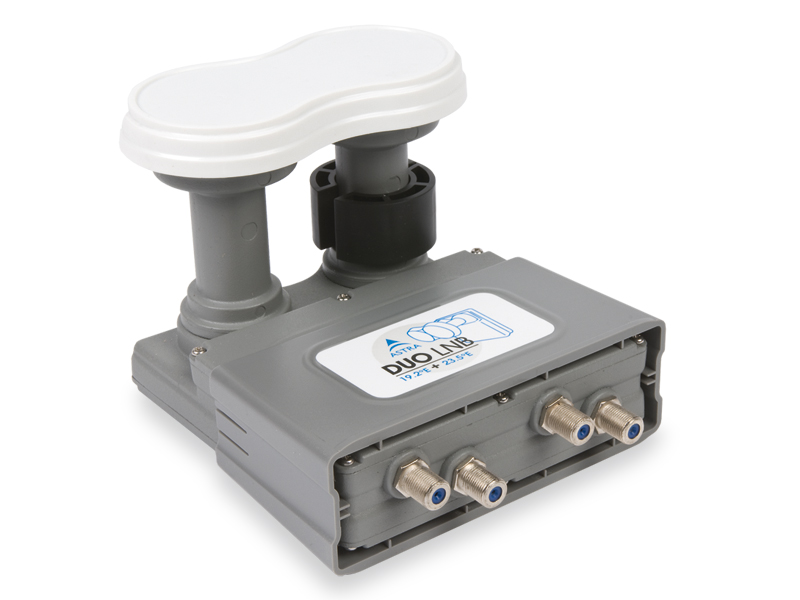TechRadar Verdict
Not as flexible as some solutions, but it does the job as advertised, and you can't argue with that
Pros
- +
Easy to install
- +
Works well
- +
Standard LNB mounting
- +
Four outputs
Cons
- -
Spacing between satellites 'fixed'
- -
Can't use with dishes that have extended side-support struts
- -
Not as flexible as DiSEqC motorised mount
Why you can trust TechRadar
This large device combines a quad LNB with a 'monoblock' able to simultaneously receive two satellites spaced apart by 4.3°, courtesy of a pair of accurately spaced feedhorns.
It was designed for hassle-free reception of the Astra clusters at 19.2°E and 23.5°E, but similarly spaced satellites are fair game too. Thanks to all those outputs, four receivers (or two dual-tuner PVRs) in different rooms can independently select different channels of different polarity on either satellite.
To achieve this, the Duo has a built-in DiSEqC 1.0 switch – the first two positions are used here. Its universal LNBs have claimed noise figures of 0.2dB.
The Duo is designed for use with an 85cm off set dish, with an F/D ratio of 0.6. One of the feedhorns is mounted at the primary focus point (fitted to the dish's LNB bracket). The other feedhorn collects the signals from the relevant satellite via a secondary focus point (a mirror image of the orbital position). Its signals will be weaker, but this isn't a problem in most UK locations owing to the size of the dish and the high transponder powers of Astra's birds.
Installation is a case of aligning the dish for the primary satellite. You would then switch to the secondary satellite, and rotate/laterally move the LNB for the best possible signal from it. Thanks to those pre-aligned feedhorns, the job is easier than it sounds – it's a lot less fiddly than the multi-LNB brackets of yore. We successfully used the Duo with 19.2°E/23.5°E and 9°E/13°E, courtesy of an old 85cm Lenson Heath dish. The orbital spacing between the second pair of satellites is 4°, but the 0.3° difference isn't much of an issue in practice.
The Duo performs best if the left-hand feedhorn is the one fitted in the primary focus position. This feedhorn will then receive signals from the most easterly of the two satellites – 23.5°E and 13°E in the above cases. The relevant LNB is selected in DiSEqC position 2. The other feedhorn will pick up the most westerly satellite (19.2°E and 9°E above) from a secondary focus point; the DiSEqC position to choose to receive this satellite is 1.
In all cases, reception proved to be reliable from both satellites in good weather.
Sign up for breaking news, reviews, opinion, top tech deals, and more.
Follow TechRadar Reviews on Twitter: http://twitter.com/techradarreview
